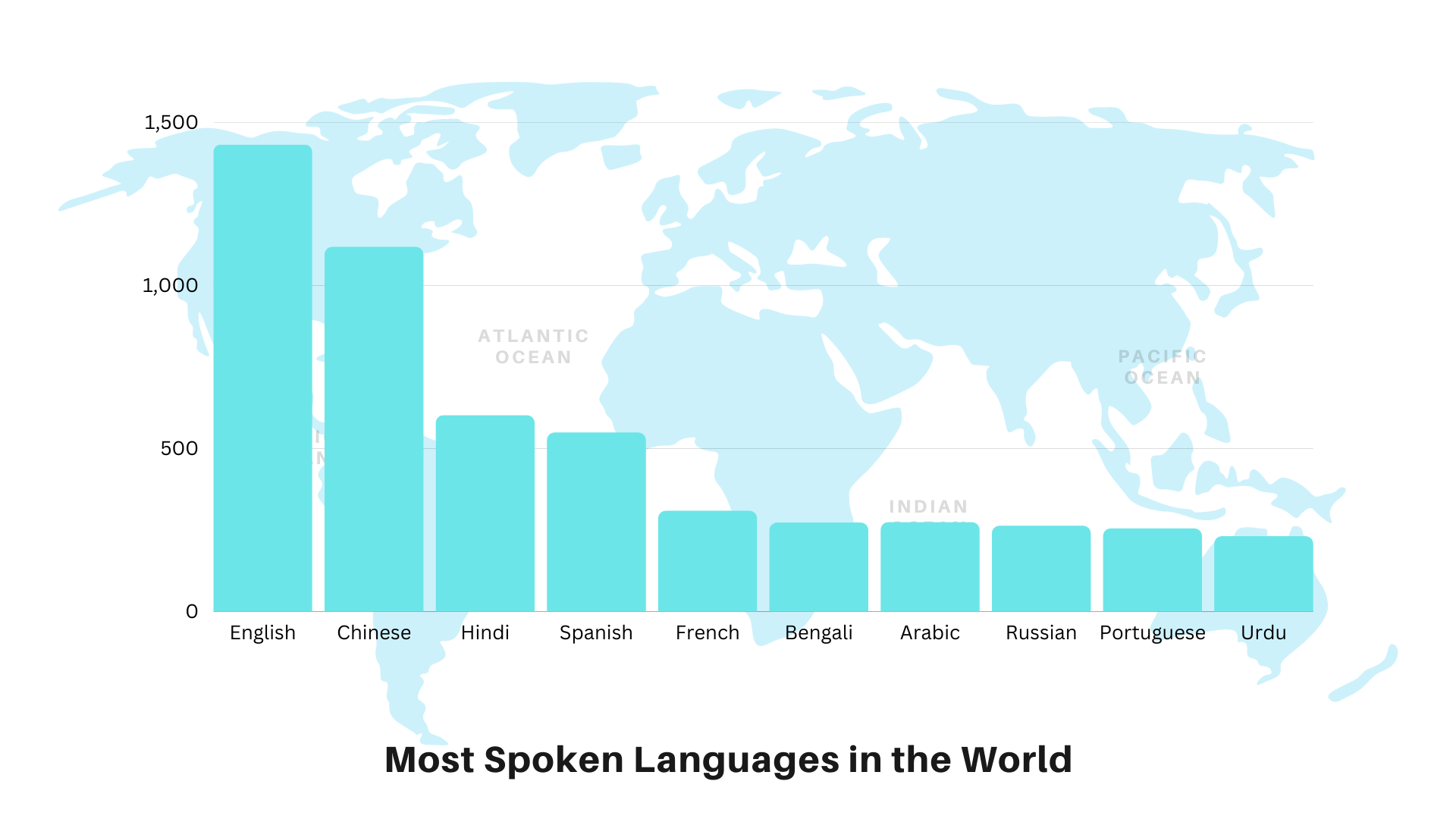
The Most Spoken Language in the World: A Journey Through Linguistic Diversity
Introduction:
Have you ever wondered which language connects the most people across the globe? In a world increasingly interconnected, language plays a vital role in communication, culture, and global understanding. This blog post will delve into the fascinating world of linguistics and explore the most spoken language in the world. We'll uncover the factors that contribute to a language's dominance, explore the cultural and social implications of linguistic diversity, and celebrate the beauty of human communication in all its forms.
1. Defining "Most Spoken" – A Complex Question:
Determining the "most spoken" language is not as straightforward as it may seem. There are several ways to measure language dominance:
Native Speakers: This focuses on the number of people who learn a language as their first language.
Total Speakers: This includes native speakers and those who have acquired the language as a second or foreign language.
Official Languages: This considers languages used in government, education, and official documents.
2. Mandarin Chinese: A Global Giant
By most metrics, Mandarin Chinese reigns supreme as the most spoken language globally.
Native Speakers: With over 1.3 billion native speakers, Mandarin boasts an impressive lead.
Cultural Significance: As the official language of the People's Republic of China, Mandarin carries immense cultural and political weight.
Economic Powerhouse: China's rising economic influence has propelled Mandarin to the forefront of international communication.
3. English: The Lingua Franca of the World
While not necessarily the most spoken in terms of native speakers, English holds a unique position as the lingua franca of the world.
Global Reach: English is widely spoken across continents, used in international business, diplomacy, and academia.
Cultural Dominance: English permeates popular culture, from music and movies to technology and social media.
Second Language Acquisition: Millions learn English as a second language, making it a valuable asset in a globalized world.
4. Spanish: A Language of Passion and Growth
Spanish is another major player in the global language landscape.
Rapid Growth: The number of Spanish speakers is rapidly increasing, driven by population growth in Latin America and the United States.
Cultural Influence: Spanish-speaking countries have a rich and vibrant cultural heritage, contributing significantly to global arts and literature.
Economic Significance: Spanish is an important language for trade and business in the Americas.
5. The Importance of Linguistic Diversity
While it's crucial to acknowledge the influence of dominant languages, it's equally important to celebrate and preserve linguistic diversity.
Cultural Heritage: Each language reflects a unique cultural identity, carrying with it stories, traditions, and ways of understanding the world.
Cognitive Benefits: Studies have shown that bilingualism enhances cognitive function, improving memory, problem-solving, and multitasking skills.
Global Understanding: Linguistic diversity fosters intercultural understanding and promotes a more inclusive and equitable world.
6. The Future of Language:
The global language landscape is constantly evolving. Factors such as globalization, technology, and migration will continue to shape the future of language use.
Rise of Technology: Technology is playing an increasingly important role in language learning and communication, with language learning apps and online platforms becoming more accessible.
Emergence of New Languages: New languages are constantly emerging, reflecting the dynamic nature of human communication.
Language Preservation: Efforts to preserve endangered languages are crucial to maintaining cultural heritage and linguistic diversity.
7. Conclusion: A World of Words
The quest to identify the "most spoken" language highlights the complex and fascinating interplay between language, culture, and global dynamics. While Mandarin and English may currently hold prominent positions, the world is a tapestry woven from a myriad of languages, each with its own unique beauty and significance.
Call to Action:
Learn a new language: Embrace the challenge of learning a new language and experience the joy of connecting with different cultures.
Celebrate linguistic diversity: Support efforts to preserve endangered languages and promote multilingualism in your community.
Embrace intercultural communication: Use language as a bridge to connect with people from different backgrounds and foster understanding.
By embracing the richness of linguistic diversity, we can build a more connected, inclusive, and harmonious world.
Disclaimer: Language statistics can vary depending on the source and methodology used. This blog post provides a general overview of the most spoken languages globally.
Keywords: most spoken language, Mandarin Chinese, English, Spanish, lingua franca, linguistic diversity, language learning, cultural heritage, global communication, intercultural understanding.
This blog post aims to provide a comprehensive and engaging overview of the most spoken language in the world. It incorporates storytelling elements, clear explanations, and relevant keywords to enhance readability and search engine optimization.
I hope you found this informative and insightful!
